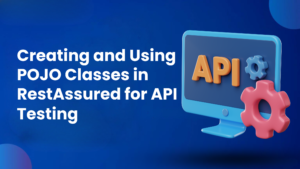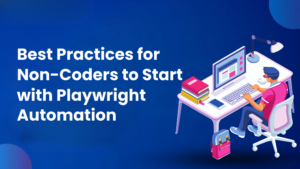

There are several technologies on the market that enable app developers to construct feature-rich mobile apps with extravagant features. This is when the ‘Stack’ terminology comes into play. Furthermore, growth Stacks are classified into two types: stacks of technology and stacks of applications.
A variety of technologies are required to create apps. Every day, the market for web and mobile application development grows. There is always discussion over which stack is preferable for custom app development.
At the moment, software programmes require a strong infrastructure to function in a dynamic environment. Developers are also in charge of selecting the best stack for optimum scalability, performance, and flexibility. It is critical that you understand what a stack is and how it can open up a world of possibilities when used in your project.
To make the best decision, developers must understand stack features, cost-effectiveness, and other relevant benefits.
Agile development is gaining popularity, and businesses must have the greatest technology infrastructures in place to realise its full potential and maximise ROI. A technology stack is a grouping of compatible technologies and computer languages.
There are two sorts of development stacks: technology stacks and application stacks. These stacks are utilised in the development of web and mobile applications. The former is a cross-disciplinary word used in the software development process.
So, before deciding which stack is best: Full Stack vs MEAN Stack vs MERN Stack, consider the following considerations. This certainly helps you in selecting the best technology stack for your forthcoming project.
- Understand your project’s requirements and objectives.
- Introduction to Agility
- Exceed project requirements for a larger audience.
- The total cost of development
- What are the specifications of your project?
- Do you want to be agile?
- Do you wish to go above and beyond project requirements in order to reach a larger audience?
- Is your team/business knowledgeable and experienced in this field?
- Is your development team both scalable and adaptable?
- What is the total development cost?
There are several technologies on the market that enable app developers to construct feature-rich mobile apps with extravagant features. This is when the ‘Stack’ terminology comes into play. Furthermore, growth Stacks are classified into two types: stacks of technology and stacks of applications.
A variety of technologies are required to create apps. Every day, the market for web and mobile application development grows. There is always discussion over which stack is preferable for custom app development.
At the moment, software programmes require a strong infrastructure to function in a dynamic environment. Developers are also in charge of selecting the best stack for optimum scalability, performance, and flexibility. It is critical that you understand what a stack is and how it can open up a world of possibilities when used in your project.
To make the best decision, developers must understand stack features, cost-effectiveness, and other relevant benefits.
A full stack developer uses a variety of tools and programming languages to work on both the front-end and back-end of an application or website. It signifies that Full Stack developers may work on an application’s entire stack, which includes Front End Technology, Back End Development Languages, Version Controlling Systems, Server, APIs, and Database. As a result, the title “Full Stack” Developer was coined.
The developer is able to construct the greatest UI/UX as well as different technologies on the backend. The developers start from the ground up and work their way up to providing a fully functional website or app.
- Front end
- Backend
- Testing
- Mobile app
Companies typically hire experienced employees in one of their departments. However, as modern workplaces grow, so does the requirement for qualified workers in new technology. Some critical competencies are listed below.
Frontend:CSS, HTML5 and Ajax single-page applications, JavaScript, Angular, TezJS, React, TypeScript, and so forth.
Backend: Python, PHP, NodeJS, ExpressJS, GO, Caching, Django, Middleware, and other programming languages.
Database: PostgreSQL, MySQL, MongoDB, SQLite, Clusters, and so on.
Mobile Apps:Android and iOS
DevOps: CI/CD pipelines
A full-stack web developer is typically in charge of project design structure management. The developer may switch development responsibilities depending on the project requirements. Furthermore, because Mern Vs Mean Stack developers are highly skilled, they can swiftly discover faults and give solutions across multiple web architectural streams. As a result, full stack development is the best option for small and mid-sized businesses that work in gaps.
As a result, many organisations are looking for full stack engineers that can construct the entire site or application from the ground up without stopping.
Strong Team Management
Full stack application development solves the load of hiring engineers and simplifies team administration. You will need to engage a few developers to complete the development. As a result, communication becomes easier, there is more transparency, and ideas can flow freely among team members.
A full stack developer is capable of switching between many technologies as needed. This is especially crucial when working on a large project when A/B testing outperforms planning.
A full stack programmer has knowledge in multiple technologies, including front-end, back-end, and database.
Because fewer programmers are engaged, full-stack web application development takes less time than other types of development. As a result, people can interchange jobs and accomplish tasks in a timely manner.
MEAN Stack is a collection of JavaScript-based technologies used to create complex websites and online apps that are both progressive and responsive. MongoDB, Express.js, Angular.js, and Node.js compose the MEAN Stack. Simply put, MEAN simplifies and accelerates development.
MEAN Stack is widely used in many industries, and developers are in high demand. For system administration, the developers benefit from a number of suitable time optimisation tools. MEAN Stack developers ensure that web apps, websites, and APIs can be easily deployed and address complicated development challenges.
MongoDB: Document-based NoSQL database that stores data in JSON files.
Express.JS: Node.js-powered back-end web application
Angular: That executes JS code in the user’s browser
NodeJS.: It is a JS runtime environment for JS backend applications
MEAN stack developers use the codebase sharing functionality to avoid having to build separate code for iOS and Android apps. This allows them to create code once and run it on both systems separately. This is known as identical coding, and it is a fundamental element of MEAN web stack development. It also implies a reduction in development time and expense.
MEAN stack developers are flexible and skilled because they can transition between server and client-side activities with ease. Furthermore, they have access to a standard coding language, which simplifies the development process even further.
MEAN web stack development allows developers to create applications quickly.
MEAN web stack development allows developers to create applications quickly.
Applications built with the MEAN stack are also easy to test, similar to development testing. Furthermore, suppose the developers are developing and testing the solution utilising cloud-based solutions. It is also simpler than what they will encounter if they use other technologies to construct the same solution.
MERN is a popular JavaScript stack that is used in the development process. MERN Stack is a collection of cutting-edge technologies for developing high-end web apps. These apps are built with a variety of frameworks, databases, libraries, and other tools.
It is made up of various open-source components, including MongoDB, React, Node.js, and the ExpressJS framework. These components aid in providing developers with end-to-end framework support.
It is an open-source, document-based database.
It is a lightweight web framework for Node.js.js
It is a JavaScript frontend library used to create user interfaces.
It is a JavaScript runtime that is built on Chrome’s V8 JavaScript engine and sends it to the server.
The MEAN stack and the MERN stack share many similarities. The only difference is that the MEAN stack employs Angular tools to construct frontend web projects, whereas the MERN stack uses React.
As we all know, MongoDB is used in the development of the MERN stack as a database management and development solution. This allows developers to store data in JSON file documents that are versatile. As a result, it is easier for developers to mix data with JSON-like file storage.
MERN stack technologies give a dynamic data model with a flexible data model. These features include strong graphical user interface and command-line tools. Finally, developers discover that the MERN stack technology allows them to build apps faster, better, and more customised.
The MERN stack allows developers to work in a full-stack development environment. In other words, users receive everything they need to build fully scalable apps directly in the stack, including the most recent frontend development tools and technologies.
While working with this technology stack, MERN stack engineers will appreciate the ability to scale the solution as needed. Furthermore, it allows for a great deal of flexibility in building solutions while keeping consistency across data centres.
| Full stack | Mean stack | MERN stack | |
| The ability | The application has a medium scope for scalability. | The application’s scalability is medium. | The application’s scalability has huge possibilities. |
| Design | Full stack provides a three-tiered web architecture. | Mean stack provides a framework for upgrading and managing code. | Mern stack provides the framework required for seamless UI rendering. |
| The efficiency | Productivity is higher across the board. | The Mean stack has higher productivity. | The Mern stack’s productivity is lower. |
| Third-party Assistance | It supports third-party libraries such as jQuery, LESS, and many others. | Mean stack provides developers with a variety of ready-to-use tools. | Mern stack provides a variety of third-party libraries to enhance its functionality. |
| Highlights | The application’s developers can add high-level functionality. | The developers can add a sufficient number of features to the programme. | The application’s developers can add high-level functionality. |
| Security | For the final solution, full stack provides medium security. | The average stack guarantees the application’s security. | The Mern stack provides medium security for mobile applications. |
When comparing Full stack vs Mean stack vs Mern stack, the answer is simple: each provides advantages. Consider aspects such as your project needs and the features you want in the end solution when selecting the optimal stack for mobile and app development.
Finally, the decision between Full-Stack, MEAN Stack, and MERN Stack is critical in developing your career as a developer. Each has advantages and disadvantages, and the decision is based on your specific aims and tastes. Consider enrolling in an in-depth Full Stack Development course as you travel this landscape. Giving yourself with various abilities guarantees that you are well-prepared to face the challenges of current web development, making you a versatile and in-demand professional in the ever-changing tech world.
Consult Us



















